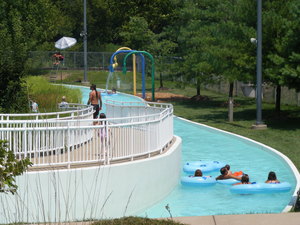It was a stunning triumph. Despite the fact that almost every tangible part of BMW was destroyed or confiscated during World War II, the tenacious manufacturer was up and running again by the end of the 1940s. And just 11 years after the war, it was producing one of the most beautiful cars ever.
As one of the larger German industrial concerns in the 1930s and ’40s, BMW was invaluable to its home country’s military efforts during the war. But this, of course, also made it a prime target for allied air raids. As a result, there wasn’t much left of BMW’s manufacturing capability after the fighting was over. The firm had literally been bombed into nonexistence — at least physically.
Making matters worse, of the little that had survived the relentless attacks, much of it ended up in the new Soviet satellite nation East Germany, under a firm called Eisenach.
Despite such monumental setbacks, BMW was nonetheless determined to resume automobile production. After putting out a trickle of motorcycles and small cars in the late 1940s, the firm for 1952 introduced a hefty sedan called the 501. For 1954, BMW introduced the 502, basically the 501 powered by an all-new 100-hp 2.6-liter V8.
Around that same time, famed American sports car importer Max Hoffman was encouraging the German firm to come up with a sports car for the well-to-do U.S. market. And why not? Hoffman had proven that Americans were hungry for exotic, foreign sporting machinery, and before the war BMW had built a fine reputation for high-performance cars.
Encouraged by Hoffman, BMW commissioned American industrial designer Count Albrecht Goertz to design a pair of sporty models, resulting in a 2+2 grand tourer called the 503 and a sleek two-seat sports car, the 507.
The 503 was certainly stylish and pleasing to look at. But it was nowhere near as striking as the enduring, masterful design of the 507, which appeared more like the charismatic machines of storied Italian marques rather than the work of a struggling German manufacturer.
Under its skin, however, BMW’s new sports car wasn’t quite as sophisticated and potent as its exterior implied — not surprising given the extremely limited development resources of its parent company. Many of the 507’s mechanical components were off-the-shelf items from the 502 sedan — steering, suspension, and V8 engine (albeit tuned for 50 more hp).
Reportedly, the 507 was no slouch. But its performance was nonetheless hampered by all-drum brakes and a somewhat high 2935-lb curb weight.
In the end, however, it wasn’t any technical or performance deficiencies that doomed the 507. After all, many of the best sports cars of that era hadn’t yet adopted disc brakes, and the 507’s curb weight was about the same as that of a Jaguar XK140 or Mercedes-Benz 300SL. What’s more, the 507 had a then-impressive top speed of more than 120 mph.
Rather, what hurt the 507’s sales the most in its intended market was simply its price. Selling for just under $9000, BMW’s sleek two-seater cost enough to buy an Aston Martin DB Mk III and a Ford sedan at the same time.
BMW kept at it from 1956-59, but the 507 nonetheless found only 253 buyers.
That however, certainly doesn’t make this fine car a failure. To the contrary. In an era when many people around the world still associated Germany with WWII and the ruin that resulted from it, the 507 announced boldly that Teutonic industry was becoming increasingly vibrant, and was looking confidently to the future.
In doing that, the 507 played a key role in reestablishing BMW’s reputation for well-engineered, exceptionally refined performance cars, an identity it maintains to this day.



